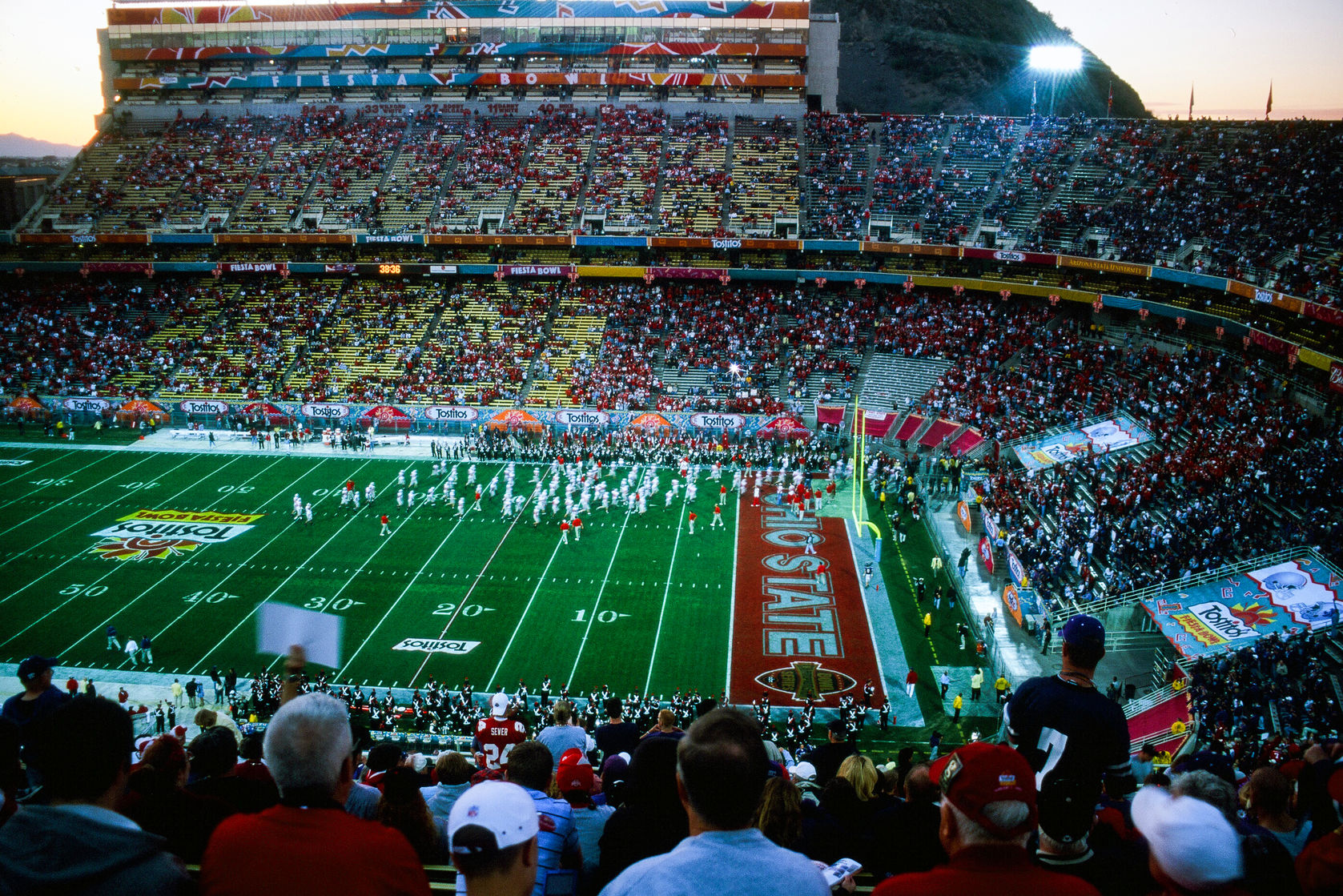As the Labor Day weekend approached, college football began another season. Even before the first game was played, USA Today presented details on a practice illustrating both how fundamentally sleazy and expensive this ball throwing entertainment is for higher education.
Bullies are individuals delighting in physically and mentally abusing weaker and more vulnerable individuals. College football, which has brought us innumerable sex, academic, financial and other scandals, also is in the bullying business—for fun and profit.
Schools that are in the Power Five Conferences with the best teams and the largest commercial success often want to pad their win-loss record by winning games early in the season by wide margins over athletically less accomplished schools in five other conferences in the so-called FBS, which includes all 129 top teams. The schools in the lesser conferences typically lose huge amounts annually (often $20 million or more) on college sports, and desperately seek to reduce those losses, so they willingly play a top team in, say, the Big Ten athletic conference, for a cash payment as compensation for the humiliation they will take when the Big Ten team typically (but not always) smashes them. They willingly let a gang of big powerful kids (a team) bully them so they can pay their bills. The bullies hope that by enhancing their win-loss record they will rise in the rankings, ultimately perhaps achieving Football Nirvana by being selected to compete for the National Championship.
There is a second dimension to this payoff scheme. Sometimes teams in the lesser five FBS conferences will pay still weaker teams, ones perhaps in Division II, schools with no national football reputation. The goal for the less powerful FBS teams is to improve their season win-loss record hoping to eventually move up to membership in a Power Five conference with the greater national recognition and revenues that entails.
The best example of this is the Mid-American Conference, a relatively weak group of FBS teams with poor records against the top Power Five conference schools, and subsequently much less in attendance and television revenues. They play many games at weird times, like Tuesday nights, to get network television exposure, since the more proficient teams hog television on Saturday afternoons. Football players at the second-tier football school at which I teach, Ohio University, have told me these midweek games hurt them academically, but academic performance is of little interest to the moguls controlling college sports. In the first week (August 31-September 1) of the college football season, 11 Mid-American schools were involved in either making or receiving payments from the school they were playing. Bullying for dollars.
Five athletically weak Mid-American Conference schools (Akron, Bowling Green, Central Michigan, Kent State and Northern Illinois Universities) located in the shadows of Big Ten powerhouses received a total of $5.37 million from the more football-proficient Universities of Nebraska, Oregon, Kentucky, Illinois and Iowa. At the same time six other Mid-American Conference schools played the aggressor role in bullying: Eastern Michigan, Western Michigan, Ball State, Miami and Ohio universities and the University of Toledo. They made payments of between $200,000 and $400,000 each to six mostly even weaker athletic schools (Monmouth U., Syracuse, Virginia Military Institute, Howard University, Marshall U. and Central Connecticut University). All told, in one weekend, over $7 million changed hands in just one athletic conference.
In the span of a few weeks, my university announced completing a new $2 million giant scoreboard for the basketball arena replacing four small but perfectly functioning scoreboards, finished a new $6 million “academic center” ostensibly to provide athletes (but no non-athletes) a luxurious place to study but importantly also to host game day alcohol-driven hospitality for gung-ho athletic boosters, many of whom probably have no idea where the school library is. It also paid Howard University $350,000 so it could beat them (barely) in football, enhancing the probability of becoming “bowl eligible,” giving it the right to play, at some meaningful additional cost, some other second tier team in some obscure location in early January before perhaps 10,000 fans. Simultaneously, students were sweltering in the largest classroom building on campus because the undoubtedly ancient air conditioning decided to temporarily die.
Nationally, college football attendance has been falling for several consecutive years. When will the insanity stop?












